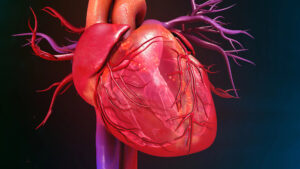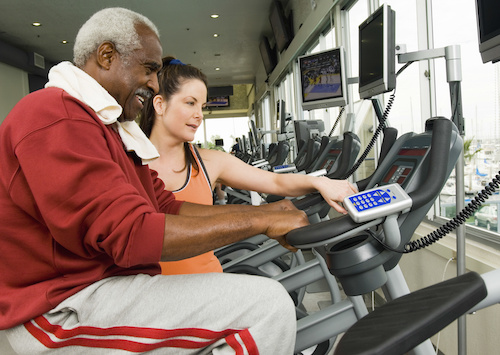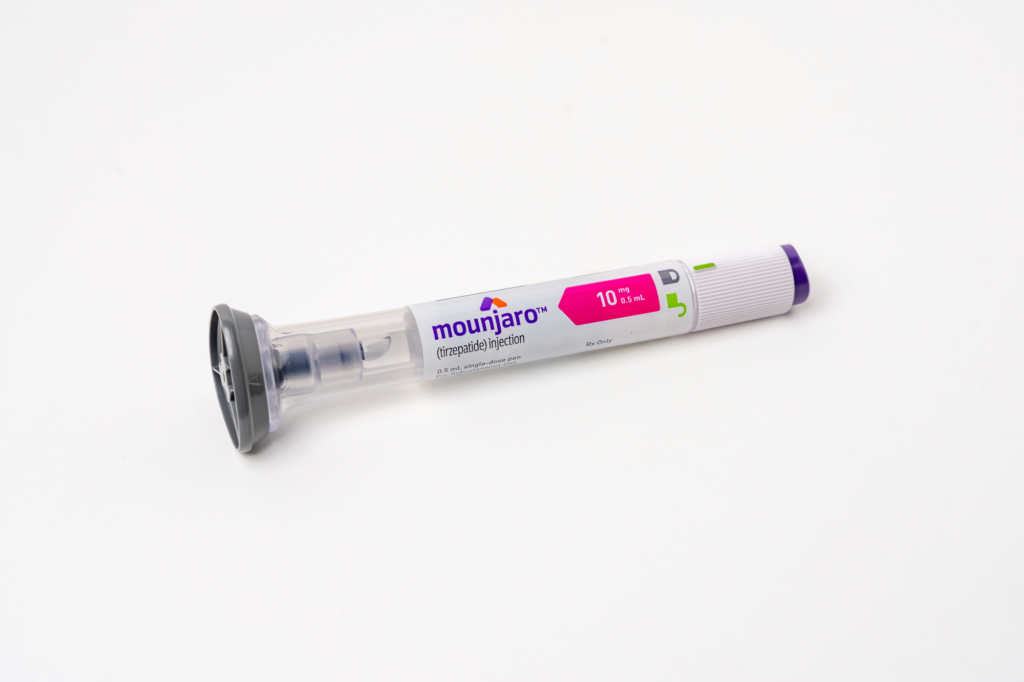Excessive fat tissue around the heart poses a risk for cardiovascular disease. What can be done to reduce the risk? Bariatric surgery and pharmaceutical drugs, such as the glucagon-like peptide analogs, sodium-glucose transporter-2 inhibitors, and lipid-lowering drugs, successfully reduce epicardial adipose tissue mass and thus, the risk of developing cardiovascular disease. But what about exercise as alternative to invasive surgery or medications? This small study, published in JAMA Cardiology, looked how well aerobic and resistance exercise reduces epicardial and pericardial adipose tissue.
“The researchers hypothesized that both endurance and resistance training would reduce epicardial and pericardial fat compared with an inactive control group.”
Participants were eligible if they were inactive and had abdominal obesity (waist to height ratio was ≥0.5 and/or waist circumference was ≥88 cm for women and ≥102 cm for men)and older than 18 years. Exclusion criteria were ischemic heart disease, diabetes, atrial fibrillation, pregnancy, treatment with immunotherapy or other biological rheumatic drugs, and health conditions that prevented magnetic resonance imaging(MRI) scans and exercise to be performed. Eligible participants were block randomized into 5 groups: 1. no exercise plus placebo, 2. no exercise plus tocilizumab, 3. exercise plus placebo, 4. exercise plus tocilizumab, or 5. resistance exercise plus placebo.

Participants were instructed to maintain their habitual life-style during the study. On a monthly basis, self-reported 3-day dietary intake was recorded and during a 4-day period free-living physical activity levels were monitored using accelerometry (AX3; sampling frequency 100 Hz).
Of the 50 randomized participants, 11 participants discontinued or were excluded from the study. Eight of them discontinued without providing a reason (n = 6) or owing to lack of time (n = 2). Three participants were excluded from the analysis. The reasons for exclusion were initiation of medical anti-contraceptive/anti-inflammatory treatment during the study(n = 2) and the lack of cardiac MRI follow-up scan (n = 1). The final study population comprised 39 participants distributed across 3 groups: no exercise control (n = 12),endurance training (n = 14), and resistance training (n = 13)(Figure 1).
Study Results for Reducing Cardiac Adipose Tissues
- This study showed that endurance and resistance training reduced epicardial adipose tissue mass in physically inactive people with abdominal obesity.
- Moreover, pericardial adipose tissue mass was only reduced by resistance training. Because epicardial and pericardial adipose tissues are emerging as risk factors for cardiovascular disease, there is a growing interest in preventive strategies to reduce fat accumulation in these depots.
- There was no effect of endurance training on pericardial adipose tissue.
The researchers demonstrated that 2 training modalities are capable of reducing cardiac adipose tissue mass. This study supports other studies showing that not only endurance, but also resistance training, can reduce epicardial adipose tissue.
- Three months of resistance and endurance training were associated with reduced epicardial adipose tissue by 24% and 32%, respectively. These effects represent the isolated effect of training because food intake remained unchanged.
- Dietary restrictions are reported to reduce epicardial adipose tissue by 32%, so it is possible that combining training and dietary restriction may have a greater effect on epicardial adipose tissue mass than exercise alone.
- In contrast and compared with the no exercise control group, resistance training reduced pericardial adipose tissue mass by 34 g (95% CI, 12-55;P= .003).
- Comparing changes in pericardial adipose tissue induced by endurance vs resistance training revealed a more pronounced effect of resistance training (28 g [95% CI, 7-49],P= .01).
- VO2max increased 219 mL/min (95% CI, 104-334) in the endurance training group and remained unchanged in the no exercise control group (−92 mL/min [95% CI, −229to 44]). Comparing the changes between these 2 groups showed a significant improvement in the VO2 max after endurance training vs no exercise (312 mL/min [95% CI, 134-489],P= .001).
- Training modality affected muscle strength. There was no change in the 1-RM chest press in the no training control group (1 kg [95% CI, −4 to 3]); in contrast, resistance training increased 1-RM chest press by 12 kg (95% CI, 8-16), which was significantly different from the no training control group (11 kg [95% CI, 6-17],P< .001) (Table 2).
In comparison, treatment with sodium-glucose transporter inhibitors for 6 months and treatment with glucagon-like peptide analogs for 3 months resulted in 14% and 29% reductions in epicardial adipose tissue, respectively.
“Considering that pharmacologic treatment can be associated with adverse effects and is associated with increased economic costs compared with training-based treatment strategies,our study highlights the importance of exercise training as a means to reduce cardiac adipose tissues,” wrote researchers
Conclusion / In this secondary analysis of a 12-week randomized clinical trial, including physically inactive people with abdominal obesity, supervised high-intensity interval endurance training and resistance training reduced epicardial adipose tissue, while only resistance training reduced pericardial adipose tissue mass. The study has several limitations to consider, including its small size. These findings need to be replicated in other larger studies.
Click Here for Full Text Study
Source: Regitse Højgaard Christensen, MD; Anne-Sophie Wedell-Neergaard, MD, et al. Effect of Aerobic and Resistance Exerciseon Cardiac Adipose Tissues Secondary Analyses From a Randomized Clinical Trial. JAMA Cardiol. July 3, 2019. doi:10.1001/jamacardio.2019.2074








